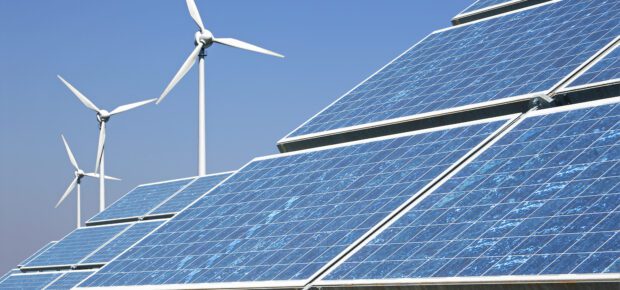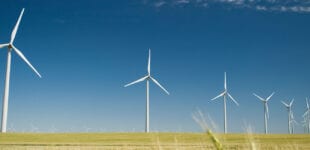April 21, 2022
There is an unprecedented level of awareness of climate change and the role of decarbonization in enabling environmental sustainability moving forward.
In particular, there has been a major focus placed on the carbon produced through electricity generation, as it is responsible for roughly 30% of emissions globally, per the United States Environmental Protection Agency (EPA). When focusing on the energy sector alone, it is apparent that nation states are coalescing into two groups when targeting carbon reductions:
- Industrialized nation states, which have been responsible for the vast majority of the total carbon generation thus far.
- Emerging economies, which are less responsible for past carbon emissions.
As the former pushes the latter, which are heavily reliant on fossil fuels to transition towards renewable energy solutions, there is a tension that needs to be navigated if we are to meet carbon reduction targets – and they are, to be clear, shared targets.
A nuanced approach to navigating this tension will see industrialized nation states collaborating with emerging economies to deploy a portfolio of solutions with low-carbon generation, storage and demand side management with advanced technology focusing on energy efficiency.
To more efficiently facilitate the global shift towards renewable energy adoption, the below six areas should be our priority.
Energy Efficiency Applications
Most people want to address climate change – however, when it comes to financing the transition to renewable energy solutions, there is a concern about how much is being spent.
To address this, industrialized nations can circumvent potential issues of waste when collaborating with developing nations by providing them with more energy efficient applications and tools instead of funding.
Consider light bulbs. The amount of electricity required to run LED light bulbs is about 25% of what is needed to run incandescent light bulbs producing the same amount of light.
By providing developing nations with lightbulbs that are more energy efficient, industrialized nations can ensure that energy consumption – and, by extension, carbon emissions – are being reduced without having to worry about financial mismanagement and waste.
Carbon Capture Systems
Deploying carbon capture systems will help to ensure that emissions created during the energy generation phase will not be emitted into the atmosphere – these technologies have the potential to significantly reduce carbon emissions in energy systems across the board.
Carbon that is captured needs to be sequestrated. But sequestration technologies are not as developed as carbon capture systems; thus, there is a limit to how much carbon can be captured.
Renewable Energy Integration
In many cases, emerging economies have the advantage of not having obsolete infrastructures already in place. Often, it can be easier to integrate renewable energy solutions into an infrastructure that is not so robustly built out than to transition away from something that is already established.
Specifically, emerging economies lacking an established infrastructure can build more strategically, focusing on where energy is needed most. This pertains to three core components – energy generation, transmission and distribution.
Unlike industrialized nations, emerging economies can save a tremendous amount of money when strategically deploying renewable energy solutions, as there is not an established, wasteful infrastructure already in place.
Hydrogen and Storage Solutions
To optimize renewable energy solutions that are being integrated into energy grids, hydrogen and storage solutions should be a priority.
Low-carbon hydrogen will help emerging economies to meet climate goals in and of itself – it’ll also serve to provide for diverse energy portfolios, improving resilience while also lowering costs.
Similarly, storage solutions can serve as optimizers for other renewable energy solutions. For example, with wind energy, storage solutions can be leveraged to ensure that electricity generated during off-peak hours does not go to waste.
Cross-Border Energy Transfer
Energy systems have, historically, been challenged by jurisdictional boundaries. However, there has recently been a shift towards cross-border energy transfer and integration stemming from the desire to lower the overall investment and operating costs of the systems in question.
The International Energy Agency (IEA) has identified three main modes of cross-border energy integration – bilateral, multilateral and unified. While these three modes are fundamentally different in terms of operationality, they all serve to provide lower costs for parties involved, as well as improved grid resiliency and environmental impacts.
We all are impacted by climate change.
And, as we are in this fight together, our solutions should be collaborative, as that’ll enable us to secure better outcomes for all countries, regardless of location.
Advanced Nuclear Technologies
Nuclear technologies have come a long way since their inception.
Now, advanced nuclear technologies, such as small modular reactors (SMRs), can play a role in providing a diverse portfolio of solutions to address climate change.
Unfortunately, there are only a handful of these technologies developed globally. Ramping up the development of SMRs, which are smaller and can be built more quickly than more traditional nuclear reactors, can help to produce energy when and where needed – in turn, this energy could be integrated into existing power grids, helping to provide improved resiliency while simultaneously reducing emissions.
The 2022 IEEE Ad Hoc Committee to Coordinate IEEE’s Response to Climate Change – the first of its kind – is chartered to develop a cross-IEEE strategy to synchronize and guide the organization’s global response to changes pertaining to climate change.
As the world’s largest organization of technical professionals, IEEE has both the opportunity and the responsibility to assist in organizing the response of engineers, scientists, and technical professionals to address the causes, mitigate the impact of and adapt to climate change. This not only includes IEEE members all over the globe working within our various organizational units and societies, but also engaging utility companies, not for profits, non-governmental organizations and other groups to identify opportunities for collaboration in order to support this important effort.
ABOUT OUR AUTHOR
Saifur Rahman, IEEE Life Fellow and IEEE 2022 President-Elect, serves as Chair of the 2022 IEEE Ad Hoc Committee to Coordinate IEEE’s Response to Climate Change.






 Quantum and AI: Safeguards or Threats to Cybersecurity?
Quantum and AI: Safeguards or Threats to Cybersecurity? Why AI Can't Live Without Us
Why AI Can't Live Without Us Bits, Bytes, Buildings and Bridges: Digital-Driven Infrastructure
Bits, Bytes, Buildings and Bridges: Digital-Driven Infrastructure Impact of Technology in 2024
Impact of Technology in 2024 Emerging AI Cybersecurity Challenges and Solutions
Emerging AI Cybersecurity Challenges and Solutions The Skies are Unlimited
The Skies are Unlimited Smart Cities 2030: How Tech is Reshaping Urbanscapes
Smart Cities 2030: How Tech is Reshaping Urbanscapes Impact of Technology 2023
Impact of Technology 2023 Cybersecurity for Life-Changing Innovations
Cybersecurity for Life-Changing Innovations Smarter Wearables Healthier Life
Smarter Wearables Healthier Life Infrastructure In Motion
Infrastructure In Motion The Impact of Tech in 2022 and Beyond
The Impact of Tech in 2022 and Beyond Cybersecurity, Technology and Protecting Our World
Cybersecurity, Technology and Protecting Our World How Technology Helps us Understand Our Health and Wellness
How Technology Helps us Understand Our Health and Wellness The Resilience of Humanity
The Resilience of Humanity Harnessing and Sustaining our Natural Resources
Harnessing and Sustaining our Natural Resources Creating Healthy Spaces Through Technology
Creating Healthy Spaces Through Technology Exceptional Infrastructure Challenges, Technology and Humanity
Exceptional Infrastructure Challenges, Technology and Humanity The Global Impact of IEEE's 802 Standards
The Global Impact of IEEE's 802 Standards Scenes of our Cyber Lives: The Security Threats and Technology Solutions Protecting Us
Scenes of our Cyber Lives: The Security Threats and Technology Solutions Protecting Us How Millennial Parents are Embracing Health and Wellness Technologies for Their Generation Alpha Kids
How Millennial Parents are Embracing Health and Wellness Technologies for Their Generation Alpha Kids Space Exploration, Technology and Our Lives
Space Exploration, Technology and Our Lives Global Innovation and the Environment
Global Innovation and the Environment How Technology, Privacy and Security are Changing Each Other (And Us)
How Technology, Privacy and Security are Changing Each Other (And Us) Find us in booth 31506, LVCC South Hall 3 and experience the Technology Moon Walk
Find us in booth 31506, LVCC South Hall 3 and experience the Technology Moon Walk Virtual and Mixed Reality
Virtual and Mixed Reality How Robots are Improving our Health
How Robots are Improving our Health IEEE Experts and the Robots They are Teaching
IEEE Experts and the Robots They are Teaching See how millennial parents around the world see AI impacting the lives of their tech-infused offspring
See how millennial parents around the world see AI impacting the lives of their tech-infused offspring Take the journey from farm to table and learn how IoT will help us reach the rising demand for food production
Take the journey from farm to table and learn how IoT will help us reach the rising demand for food production Watch technical experts discuss the latest cyber threats
Watch technical experts discuss the latest cyber threats Explore how researchers, teachers, explorers, healthcare and medical professionals use immersive technologies
Explore how researchers, teachers, explorers, healthcare and medical professionals use immersive technologies Follow the timeline to see how Generation AI will be impacted by technology
Follow the timeline to see how Generation AI will be impacted by technology Learn how your IoT data can be used by experiencing a day in a connected life
Learn how your IoT data can be used by experiencing a day in a connected life Listen to technical experts discuss the biggest security threats today
Listen to technical experts discuss the biggest security threats today See how tech has influenced and evolved with the Games
See how tech has influenced and evolved with the Games Enter our virtual home to explore the IoT (Internet of Things) technologies
Enter our virtual home to explore the IoT (Internet of Things) technologies Explore an interactive map showcasing exciting innovations in robotics
Explore an interactive map showcasing exciting innovations in robotics Interactively explore A.I. in recent Hollywood movies
Interactively explore A.I. in recent Hollywood movies Get immersed in technologies that will improve patients' lives
Get immersed in technologies that will improve patients' lives